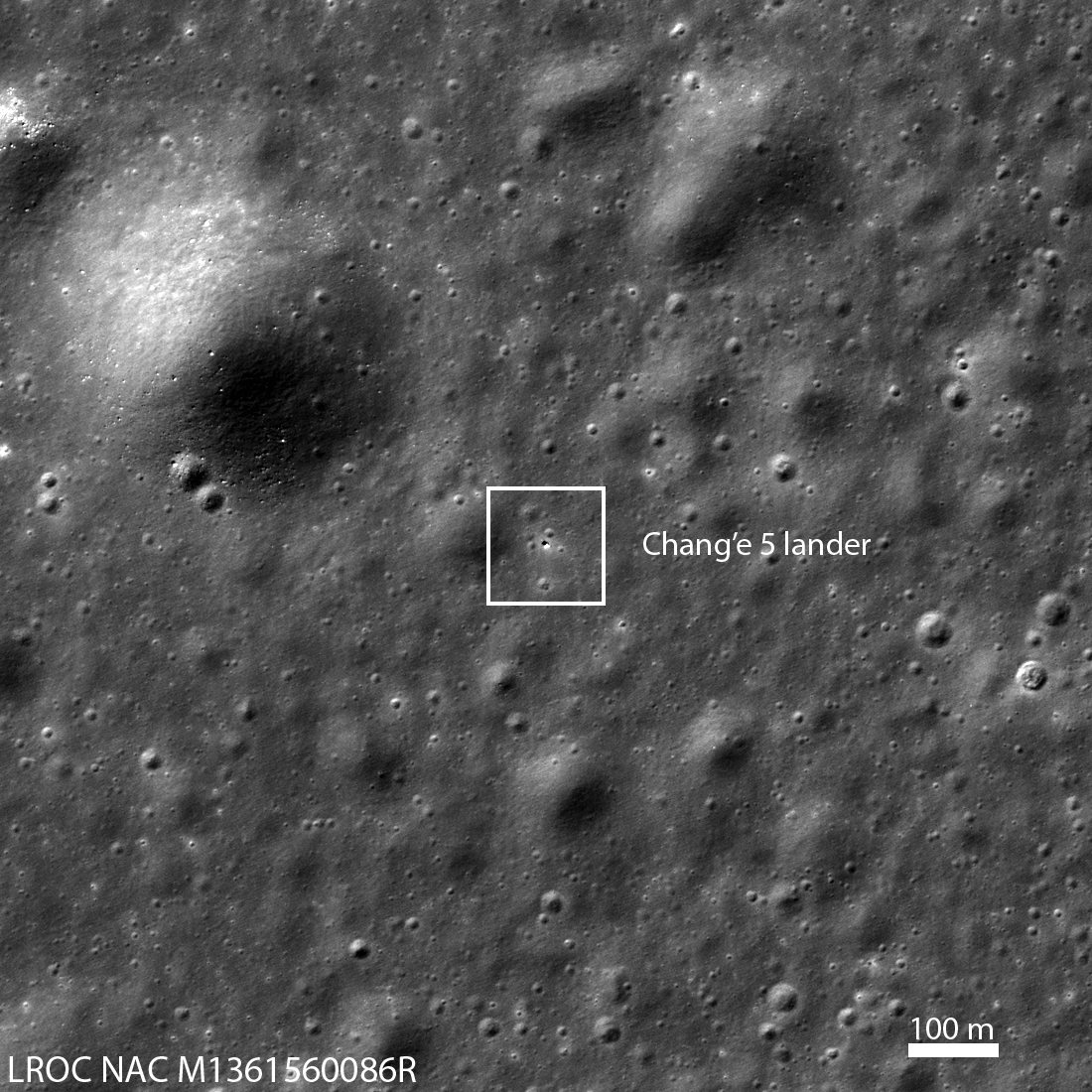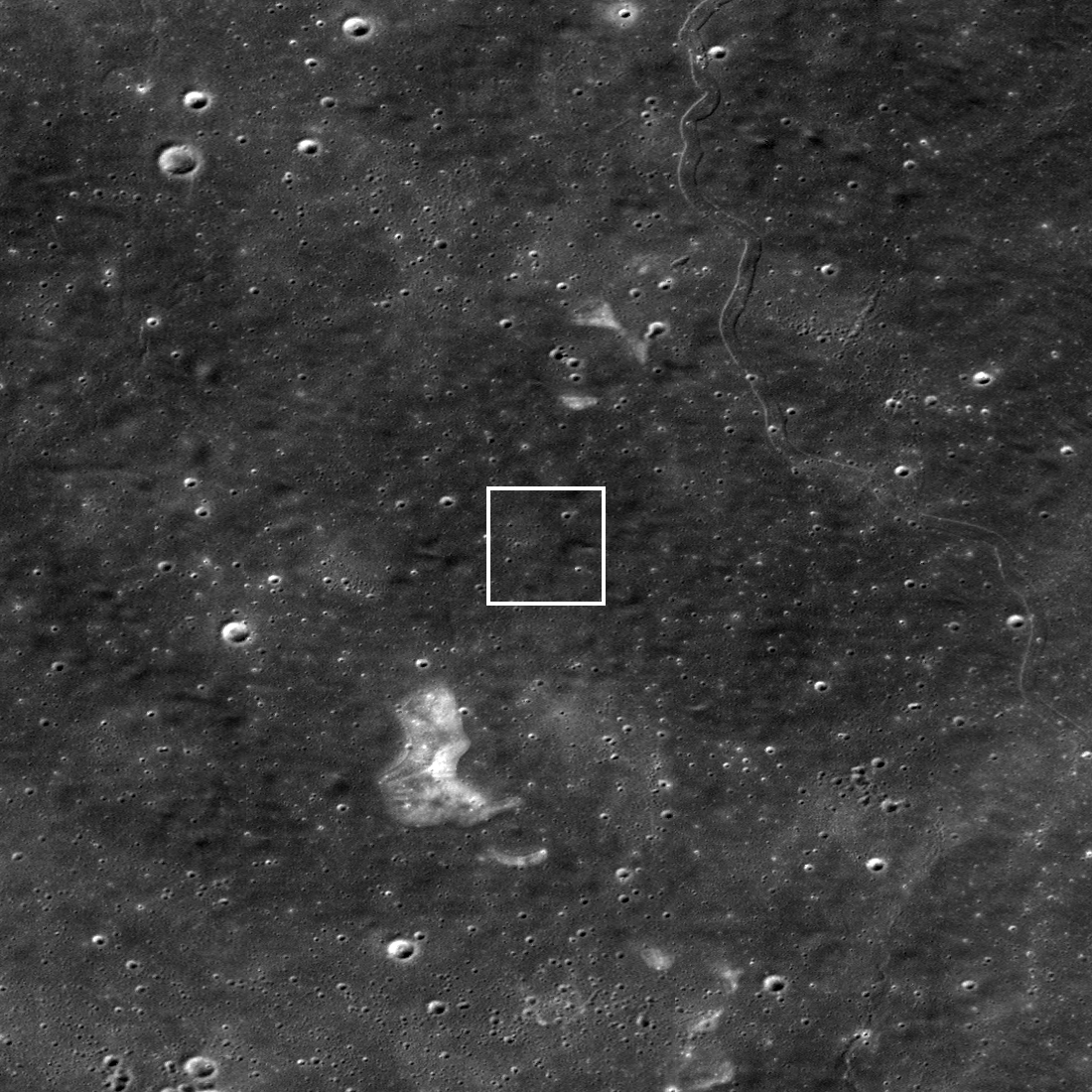
China's Chang'e 5 sample return spacecraft made a safe touchdown on the lunar surface at 10:11 EST (15:11 UTC) 01 December 2020. LRO passed over the site the following day and acquired an off-nadir (13° slew) image showing the lander centered within a triangle of craters. The LROC team computed the coordinates of the lander to be 43.0576° N, 308.0839°E, –2570 m elevation, with an estimated accuracy of plus-or-minus 20 meters.

The local geology consists of a broad, flat mare basalt unit. Similar to flood basalts on the Earth, this deposit was the result of a massive outpouring of highly fluid basaltic lavas. In the lunar case, this massive eruption occurred somewhere between one and two billion years ago. Chang'e 5 is now in the process of returning a small sample of this volcanic unit to Earth so that scientists can precisely determine its age and chemistry.
Related Featured Images
Chang'e 4 Rover Comes Into View
Von Kármán Crater: Awaiting A Visitor
Chang'e 3 Lander and Rover From Above
Published by Mark Robinson on 4 December 2020